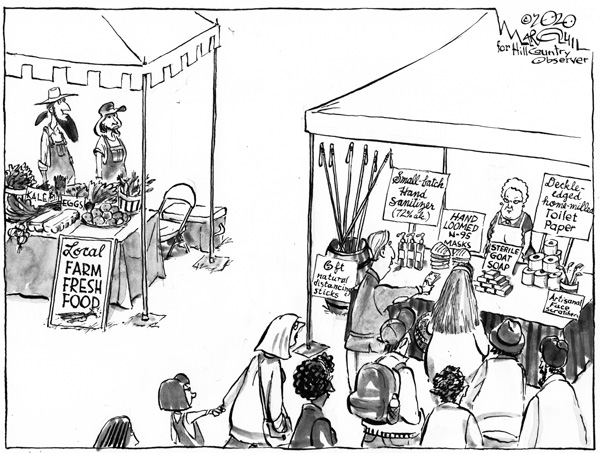Editorial April 2020
E D I T O R I A L
First battle was lost in failure to test
As we prepare this issue for press at the end of March, the Covid-19 pandemic has shut down much of the Northeast and is threatening to hit New York City and its suburbs with catastrophic force over the next few weeks.
For now, the focus of the nation and our region is appropriately on how to limit the height and breadth of the crisis in the metropolis to our south – by sharing our health care workers and facilities, and by helping in any way possible in New York’s effort to marshal ventilators and protective equipment for the doctors and nurses on the front lines
But the coronavirus also poses special threats to our own region, with its graying population and tourist-dependent economy, and the virus is already here and spreading. In the eight counties that make up our readership area, the number of confirmed Covid-19 cases has grown from a half-dozen on the weekend of March 7-8, when the disease made its first appearance here, to more than 400 on March 31.
Because so few people have been tested, however, the actual number infected in our region likely exceeds the number of confirmed cases many times over. Amazingly, even now, weeks into this crisis, local health officials have so few test kits that they reserve them only for seriously ill patients, health care workers and first responders – and sometimes not even for them.
We have arrived at our current situation in part because of a spectacular failure by our federal government to anticipate and respond promptly to this epidemic, and nowhere is that failure more in evidence than in lack of testing.
As Covid-19 spread from its initial outbreak in China late last year, countries like South Korea, Singapore and Germany, instituted rigorous testing to track the spread of the disease. When someone tested positive, health officials traced and tested that person’s contacts in an effort to contain the disease. Because of that effort, those countries managed to slow the growth of cases and the mortality among those infected.
But after the coronavirus reached the United States in mid-January, we lost precious days and weeks through all of February when containment through widespread testing might have been possible. Now, having lost that battle by default, we’ve turned to the far more costly and difficult task of slowing a disease that’s already spread to all 50 states and nearly every county.
The question of how we missed the window for containment will need to be answered in due course. When the worst of this crisis is over, we’ll need a truth commission to sort out what our top federal officials and members of Congress knew and when they knew it.
For now, the strategy of staying in our homes as much as possible and practicing social distancing when we must go out is our best chance of avoiding a fate like Italy’s. But it’s a strategy that assumes that, even with social distancing, many of us eventually will be sickened. The goal is to “flatten the curve” -- lowering the number of cases at any one time and keeping hospitals from becoming overwhelmed, thereby resulting in better care for everyone.
The statistics from other countries show that even if we’re sickened by Covid-19, the vast majority of us will survive. But if our efforts at staying home and social distancing fail and the worst-case projections become real, we might all know someone who didn’t.


